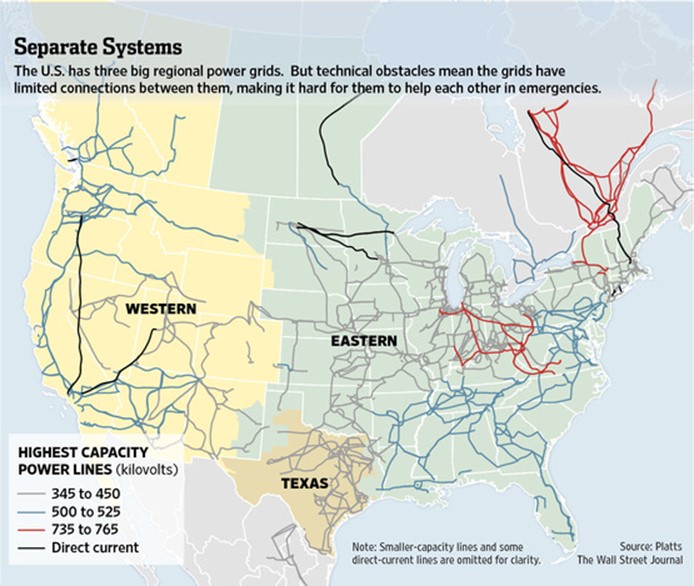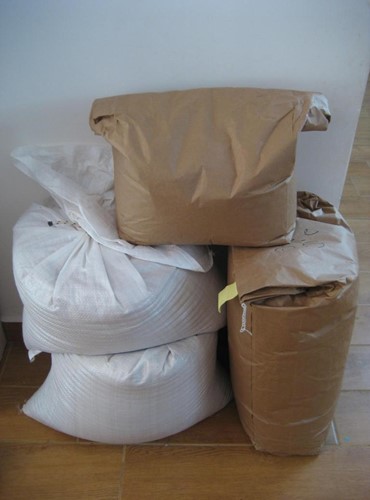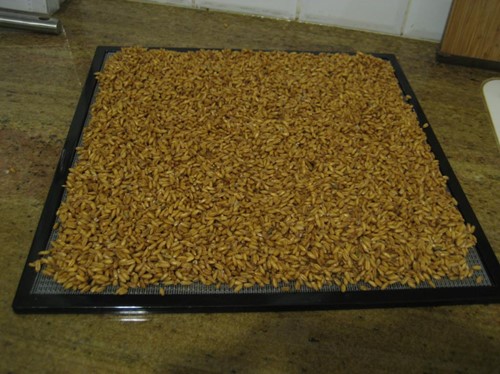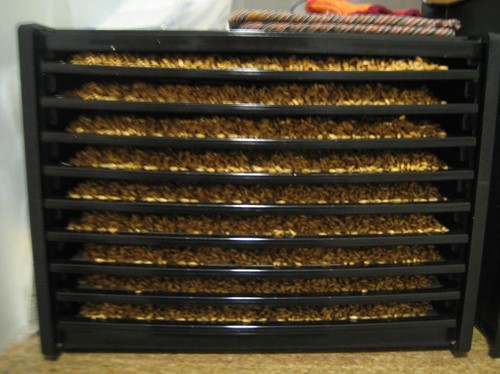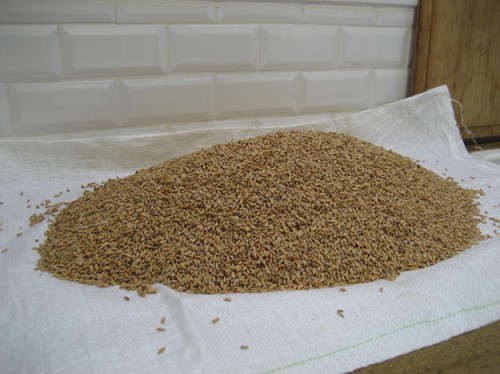This article has been contributed by Brandon Smith of Alt Market.
With the Crimea referendum passed and Russia ready to annex the region, the United States and the European Union have threatened sanctions. The full extent of these sanctions is not yet known, and announcements are pending for the end of March. If these measures are concrete, they will of course be followed inevitably by economic warfare, including a reduction of natural gas exports to the EU and the eventually full dump of the U.S. dollar by Russia and China. As I have discussed in recent articles, the result of these actions will be disastrous.
For those of us in the liberty movement, it is now impossible to ignore the potential threat to our economy. No longer can people claim that “perhaps” there will be a crisis someday, that perhaps “five or 10 years” down the road we will have to face the music. No, the threat is here now, and it is very real.
The loss of the dollar’s world reserve status will destroy the only thread holding up its value, namely, investor faith. There are only two possible outcomes from that point onward:
A) The U.S. will be forced to default because no nation will purchase our Treasury bonds and support our debt spending, causing the dollar’s value to implode.
B) The Fed will choose to restart and expand quantitative easing measures, confiscate pension funds, raid bank accounts or issue new taxes in order to keep the system afloat; this will also end in the eventual collapse of dollar value and hyperinflation.
The consequences will lead to an explosion in prices — first in commodities and necessities like petroleum, imported raw materials, food, electricity, etc. and then in all other goods and services. Austerity measures will be instituted by Federal and State governments. Cuts to social welfare programs, including food stamps, are probable. Civil infrastructure will suffer. The cost effectiveness of maintaining public utilities could become unrealistic. Anyone relying on such services may find themselves cut off for days, weeks or indefinitely. Public suffering will invariably rise, along with public crime.
If events like Hurricane Katrina in New Orleans are any indication, the Federal government’s response will be inadequate, to say the least. The Federal Emergency Management Agency clearly cannot be relied upon to provide food, shelter, medical care or protection for communities. In fact, in the aftermath of Hurricane Katrina, the Feds did far more harm than good, corralling people into camps where death was rampant and disarming outlying neighborhoods so that they could not defend themselves. Tens of millions of dollars in donated and Federally purchased necessities were never delivered to aid survivors. Trucks were turned away, and help from civilian sources was denied.
The point is, if you find yourself in the midst of a national or international catastrophe, you should assume that you will be on your own with whatever preparations you made beforehand. To assume otherwise would be foolish, given our government’s track record.
There are some people who will argue that during an international crisis, such as an economic war or a world war, there is no purpose to preparedness. They will argue that there is nothing an individual or family can do to weather the storm or fight back, because the scale of the threat would be “too great.” There is no place for such defeatism in the life of the liberty-minded. The scale of the threat is irrelevant, and only cowards give up a fight before it even begins. Survival and freedom require an unwavering conviction. Nihilists will fulfill their own prophecies, suffering a fate exactly as they imagine for the rest of us; living in fear, slavery, and obscurity.
That said, it is also important to acknowledge the truth that the majority of Americans today are utterly unready for a minor localized disaster, let alone a national or global crisis. This problem, though, could be easily remedied with a few simple beginning steps. I find that most people are not averse to the idea of preparedness, but many have trouble taking the first steps in the right direction. For longtime preparedness champions, the information listed here might seem like old-hat. However, I challenge each liberty movement member to approach at least one friend or family member who could benefit from the steps below. Prepping appears daunting to the uninitiated; show them how simple it can actually be.
Below is a list of goals that every liberty movement member and American can easily achieve starting today and continuing over the course of the next month. If enough citizens were to take the initiative to do these things, all threats — no matter how imposing — could be overcome.
Buy Three Months Of Food Stock
Food supply is the greatest Achilles’ heel of the American populace. Most homes store less than one week’s worth of food items at any given time. The average person needs between 2,000 and 3,000 calories per day to maintain sufficient energy for survival. It takes around four to six weeks for a person to die of starvation and malnutrition. In a collapse scenario, most deaths will likely occur within the first few months, either by weakness and illness, or by looting and violence. The idea is to at least get through this first catastrophic phase without becoming a villain, or falling victim to one. One person removed from starvation is one possible threat removed from the equation.
Three months of supply is not ideal by any means, but it will buy you precious time. Start with 2,000 calories per day per person. Bulk foods can be purchased cheaply (for now) and can at the very least provide sustenance during emergencies. A 20-pound bag of rice, for instance, can be had for less than $15 and provides about 30,000 calories, or 2,000 calories per day for 15 days for one person. Supplement with beans, canned vegetables and meats, honey for sugar, or freeze-dried goods, and you will be living more comfortably than 90 percent of the population.
Food stockpiling is one of the easiest and most vital measures a person could take. Yet, sadly, it is one of the last preparations on people’s minds.
Buy A Water Filter
Do not count on city water to remain functional. Even during a drawn-out economic downturn rather than an immediate crisis, there is a good chance that some utilities will be sporadic and unreliable. This means you will have to focus on rainwater collection, as well as water from unclean sources. Boiling the water will kill any bacteria, but it will not kill the taste of sediments and other materials floating around. A high-grade survival filter is the best way to get clean water that tastes good.
The average person needs about a gallon of water per day to remain healthy and hydrated. I highly recommend the Sawyer Mini Water Filter, which is a compact washable filter that can cleanse up to 100,000 gallons of water. It uses no moving parts, making it harder to break; and it costs only $20.
Buy A Small Solar Kit
Try going a week or two without electricity, and you may find how dismal life can truly be. The very absence of light at night reduces one’s productivity time drastically, and using fuel for lanterns is not practical in the long term. Solar power is truly the way to go for a grid-collapse scenario.
I’ve heard much whining about the cost of solar power, but small systems that will serve most electrical needs can be set up for less than $1,000. Two 100-watt panels, a power inverter, charge controller and four to six 12-volt deep-cycle batteries are enough to deal with most electrical needs in a survival situation; and all these items can be contained in a portable foot locker for minimal cost. New solar panels are much more effective in low-light conditions and winter weather as well, making solar a must-have prep item.
Store A Fuel Source
Twenty gallons of gasoline treated with fuel saver is not expensive to purchase today, but in the midst of hyperinflation, it may be impossible to obtain tomorrow. Kerosene is useful for heating and cooking. Propane can be stored for decades and runs numerous appliances. If you live in a forested area, dried wood can be had for free, and can keep you warm throughout the winter months (keep in mind the your local danger factor when using fire). It is vital to have a means to stay warm and fed during the most difficult seasonal changes, especially during a grid down scenario.
Find Alternative Shelter
There are no guarantees during a full-spectrum disaster. Having all your eggs in one basket is not only stupid, but unnecessary. Always have a plan B. That means scouting an alternative location for you and your family in the event that your current shelter comes under threat. This location should be far enough away from large population centers but still within a practical range for you to reach them. It should also have a nearby water source, and be defensible. Establishing supply caches near this site is imperative. Do not assume that you will be able to take all of your survival supplies with you from your home. Expect that surprises of a frighteningvariety will arise.
Buy One Semi-Automatic Rifle
At this point I really don’t care what model of rifle people purchase, as long as they have one, preferably in high capacity and semi-automatic. AR-15, AK-47, Saiga, SKS, M1A: just get one! Every American should be armed with a military-grade rifle. If you are not, you are not only negligent in your duty as a free citizen, but you are also at a distinct disadvantage against the kind of opponents you are likely to face in a collapse situation.
Buy 1,000 Rounds Of Ammunition
Again, this is by no means an ideal stockpile, but it is enough to get you through a couple rough patches if you train furiously. Cheap AK-47 ammo can be had for $5 for a box of 20 rounds. Get what you can while you can, because the prices are only going to skyrocket in the near term.
Approach One Friend Or Neighbor
Community is what will make the difference between life and death during a SHTF collapse. I challenge everyone in the liberty movement to find at least ONE other person to work with in the event of disaster. Lone-wolf operations may be strategically practical for short periods of time; but everyone needs rest, and everyone needs someone else to watch his back. Do not fall into the delusion that you will be able to handle everything on your own.
Learn One Barter Skill
Learn how to fix one vital thing or provide one vital service. Try emergency medical training, gunsmithing or metal working, as long as it is an ability that people will value. You have to be able to produce something that people want in order to sustain yourself beyond the point at which your survival stockpile runs out. Be sure that you are seen as indispensable to those around you.
Grow A Garden
Spring is upon us, and now is the perfect opportunity to grow your own food supply. If you have even a small yard, use that space to grow produce. Focus on high-protein and high-vitamin foods. Buy a dehydrator or canning supplies and save everything. Use heirloom seeds so that you can collect new seed from each crop to replant in the future. If every American had a garden in his backyard, I wouldn’t be half as worried about our survival as I am today.
Prepare Your Mind For Calamity
The most valuable resource you will ever have is your own mind. The information held within it and the speed at which you adapt will determine your survival, whether you have massive preparations or minimal preparations. Most people are not trained psychologically to handle severe stress, and this is why they die. Panic equals extinction. Calm readiness equals greater success.
The state of our financial system is one of perpetual tension. The structure is so weak that any catalyst or trigger event could send it tumbling into the abyss. Make no mistake; time is running out. We may witness a terrifying breakdown tomorrow, in a year, or if we are lucky, a little longer. The path, though, has been set and there is no turning back. All of the items above can be undertaken with minimal cash flow. If you receive a regular paycheck, you can establish a survival supply for yourself and your family. There are no excuses.
Take the steps above seriously. Set your goals for the next four weeks and see how many of them you can accomplish. Do what you can today, or curse yourself tomorrow. What’s it going to be?
You can contact Brandon Smith at: [email protected]
Start now to make sure you are staying prepared.
Via: shtfplan

 Follow
Follow